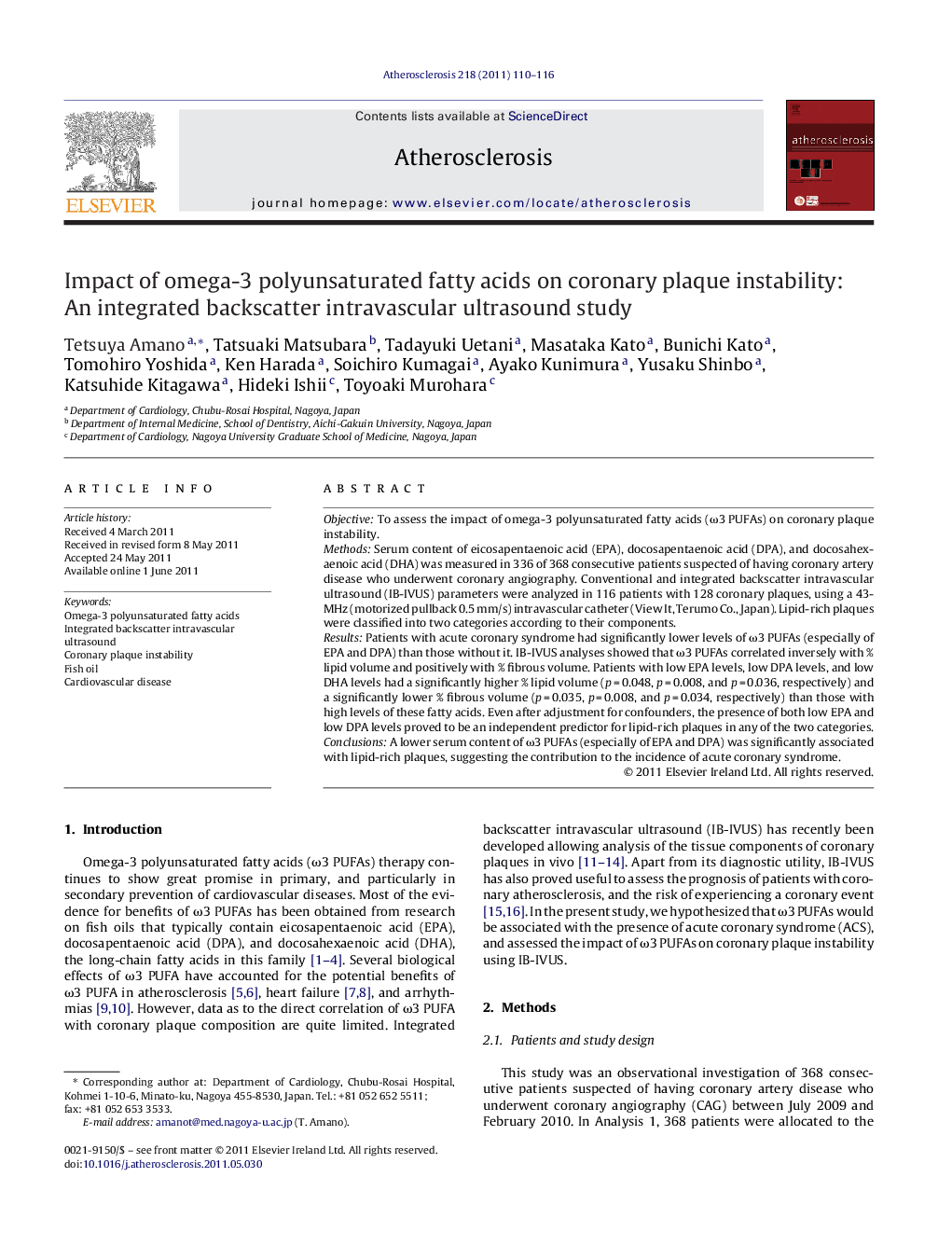| کد مقاله | کد نشریه | سال انتشار | مقاله انگلیسی | نسخه تمام متن |
|---|---|---|---|---|
| 5950536 | 1172399 | 2011 | 7 صفحه PDF | دانلود رایگان |

ObjectiveTo assess the impact of omega-3 polyunsaturated fatty acids (Ï3 PUFAs) on coronary plaque instability.MethodsSerum content of eicosapentaenoic acid (EPA), docosapentaenoic acid (DPA), and docosahexaenoic acid (DHA) was measured in 336 of 368 consecutive patients suspected of having coronary artery disease who underwent coronary angiography. Conventional and integrated backscatter intravascular ultrasound (IB-IVUS) parameters were analyzed in 116 patients with 128 coronary plaques, using a 43-MHz (motorized pullback 0.5 mm/s) intravascular catheter (View It, Terumo Co., Japan). Lipid-rich plaques were classified into two categories according to their components.ResultsPatients with acute coronary syndrome had significantly lower levels of Ï3 PUFAs (especially of EPA and DPA) than those without it. IB-IVUS analyses showed that Ï3 PUFAs correlated inversely with % lipid volume and positively with % fibrous volume. Patients with low EPA levels, low DPA levels, and low DHA levels had a significantly higher % lipid volume (p = 0.048, p = 0.008, and p = 0.036, respectively) and a significantly lower % fibrous volume (p = 0.035, p = 0.008, and p = 0.034, respectively) than those with high levels of these fatty acids. Even after adjustment for confounders, the presence of both low EPA and low DPA levels proved to be an independent predictor for lipid-rich plaques in any of the two categories.ConclusionsA lower serum content of Ï3 PUFAs (especially of EPA and DPA) was significantly associated with lipid-rich plaques, suggesting the contribution to the incidence of acute coronary syndrome.
⺠Omega-3 polyunsaturated fatty acids (w3 PUFAs) therapy continues to show great promise in primary and, particularly in secondary prevention of cardiovascular diseases. ⺠Few studies, however, have examined the relevance of w3 PUFA serum levels as an entity with coronary plaque, especially with its tissue components. ⺠The presence of both low eicosapentaenoic acid (EPA) content and low docosapentaenoic acid (DPA) content proved to be an independent predictor of lipid-rich plaques measured by integrated backscatter intravascular ultrasound. ⺠These findings might help explain the protective mechanisms by which w3 PUFAs, mainly of EPA and DPA, contribute to decrease the risk of atherosclerotic change.
Journal: Atherosclerosis - Volume 218, Issue 1, September 2011, Pages 110-116